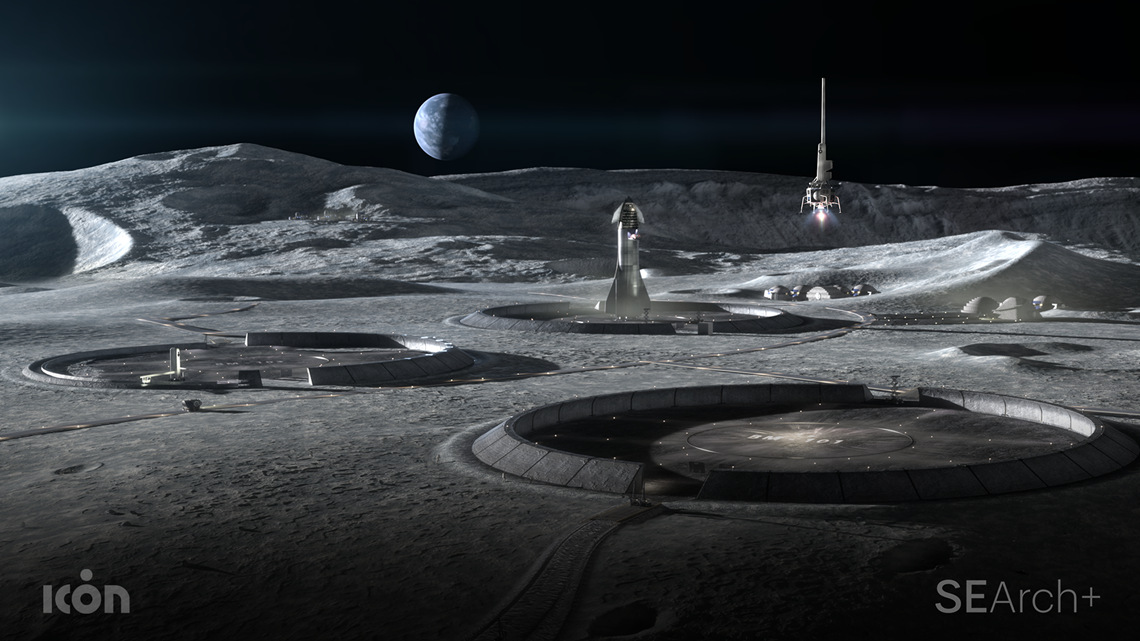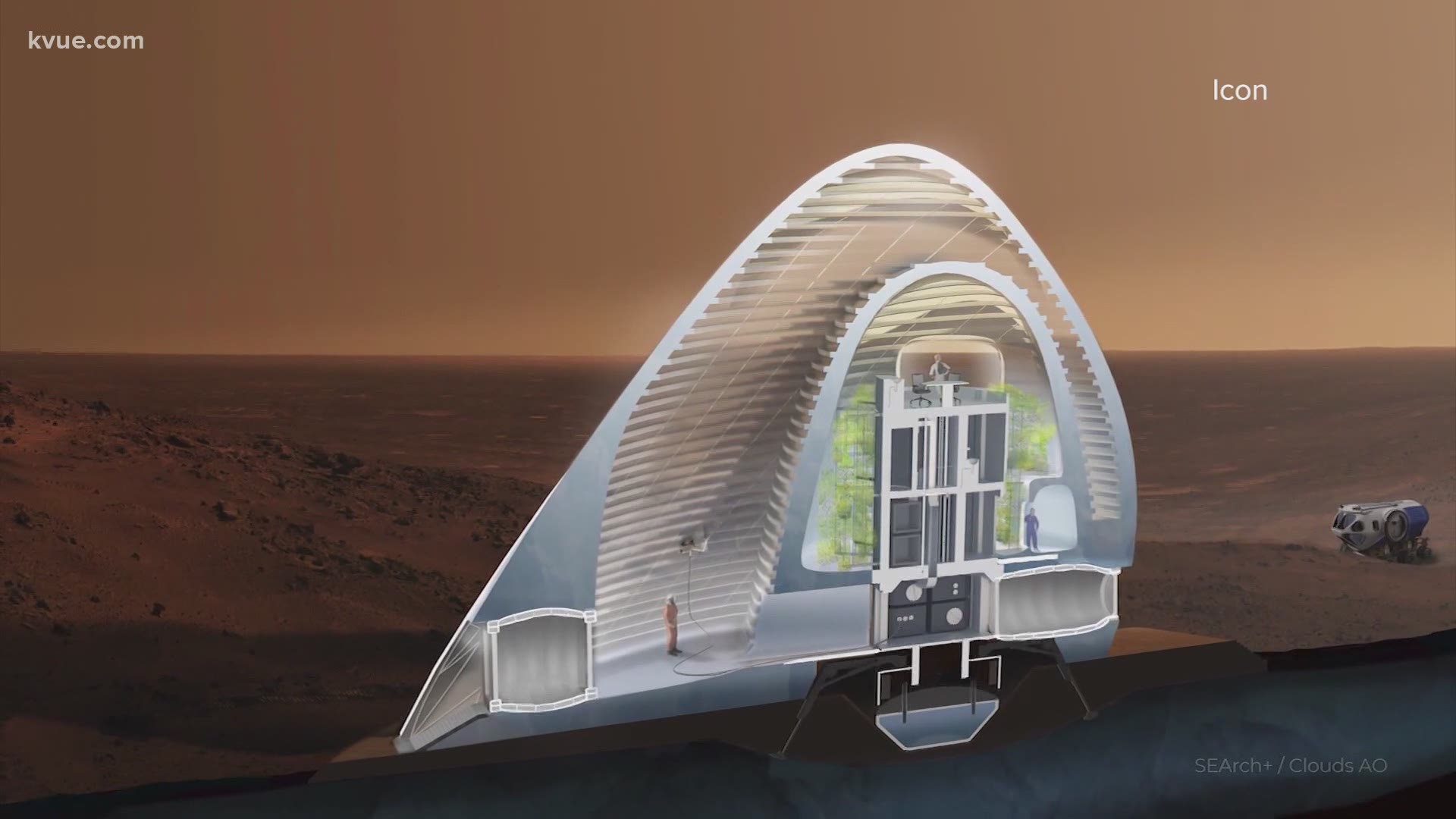AUSTIN, Texas — Austin-based ICON announced Thursday it has been selected to receive funding from NASA to help develop a construction system to help scientists explore the moon.
The company, which is a developer of advanced construction technologies including robotics, software and building materials, received a small business innovation research (SBIR) contract to begin research and development of a space-based construction system that could be used off the planet.
ICON will now be dedicating a division of the company to focus on space.
“Building humanity’s first home on another world will be the most ambitious construction project in human history and will push science, engineering, technology, and architecture to literal new heights,” said Jason Ballard, co-founder and CEO of ICON. “NASA’s investment in space-age technologies like this can not only help to advance humanity’s future in space, but also to solve very real, vexing problems we face on Earth. We are honored to begin our research and development on ICON’s 'Project Olympus' and the 'Olympus Construction System.'"
NASA's Artemis program is aiming to land the first woman and the next man on the moon by 2024. It is also planning to make the moon the first off-Earth site for sustainable surface exploration.
ICON said building a sustainable presence on the moon will require more than rockets. To make a permanent human presence a reality, new structures will need to be erected that provide better thermal, radiation and micrometeorite protection than metal or inflatable habitats can provide.
The company is known for its advanced 3D-printing technology for homebuilding on Earth. It has been awarded a SBIR Strategic Fund Increase contract through the AFVentures managed "Open Topic" process to develop its technology, advanced materials and software further.


With the help from NASA under the Air Force SBIR, ICON will continue to develop off-Earth applications for potential use for sustainable lunar missions and advance technology with shared agency benefits for Earth and space.
ICON will partner with NASA's Marshall Space Flight Center in Huntsville, Alabama, to test lunar soil simulant with processing and printing technologies. These tests will help design and develop prototype elements for a possible future full-scale additive constructing system that could print infrastructure from space.
The company will also work with two award-winning architecture firms as partners for the project: BIG-Bjarke Ingels Group and SEArch+.
"To explain the power of architecture, 'formgiving' is the Danish word for design, which literally means to give form to that which has not yet been given form. This becomes fundamentally clear when we venture beyond Earth and begin to imagine how we are going to build and live on entirely new worlds,” said Bjarke Ingels, founder and creative director of BIG-Bjarke Ingels Group. “With ICON we are pioneering new frontiers – both materially, technologically and environmentally. The answers to our challenges on Earth very well might be found on the moon.”
“Ensuring the safety of astronauts is primary to our work at SEArch+. As architects and designers, we strive to create aspirational spaces that enrich and celebrate human life. We are thrilled to support 'Project Olympus' and come one step closer toward becoming an interplanetary species. 3D printing with indigenous materials is a sustainable and versatile solution to off-world construction that will prove to be vital to our future here on Earth and in Outer Space,” said SEArch+ co-founders.
Here on Earth, ICON broke ground on the world's first 3D printed community of homes in Mexico, has completed a series of homes serving the homeless in Austin, and has worked with the U.S. Marine Corps to train Marines to operate its technology and complete a field demonstration print at Camp Pendleton in California.
PEOPLE ARE ALSO READING:

